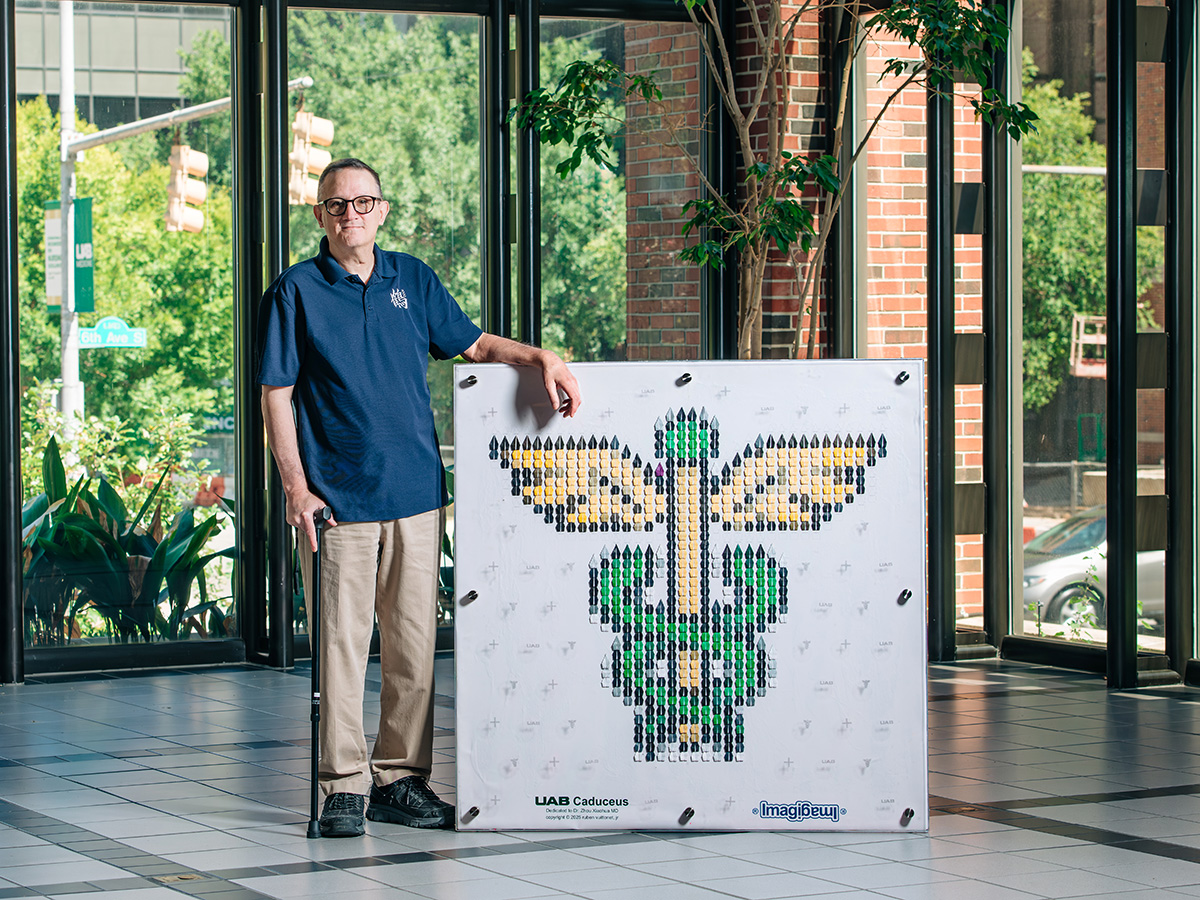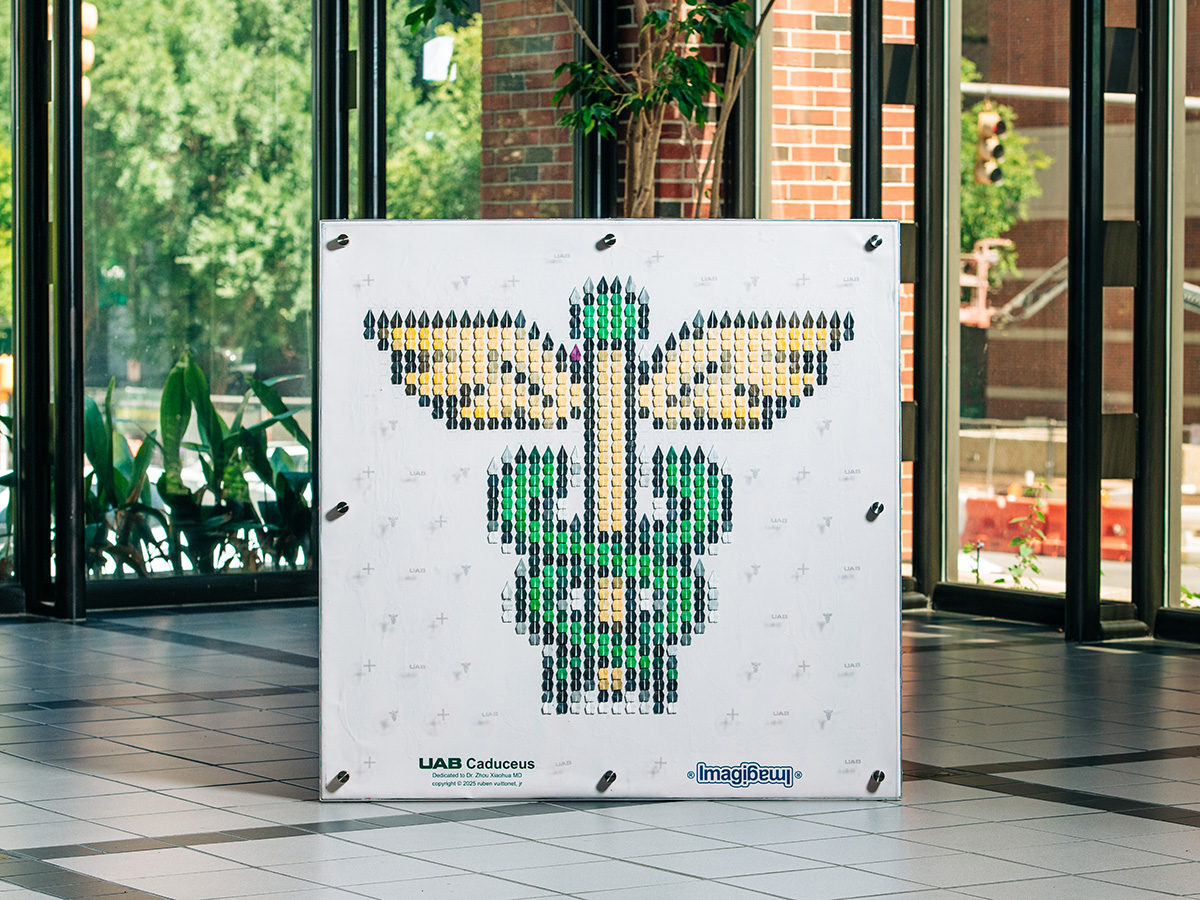 UAB patient Ruben Vuittonet Jr. uses his passion for origami to help others through difficult times.At 9 years old, Ruben Vuittonet Jr. learned origami from a young boy whose father was a marine in Okinawa, Japan. Little did he know, 50 years later, he would be using this hobby to give hope to people all around the world, including at the University of Alabama at Birmingham.
UAB patient Ruben Vuittonet Jr. uses his passion for origami to help others through difficult times.At 9 years old, Ruben Vuittonet Jr. learned origami from a young boy whose father was a marine in Okinawa, Japan. Little did he know, 50 years later, he would be using this hobby to give hope to people all around the world, including at the University of Alabama at Birmingham.
After suffering a stroke in 2019, Vuittonet struggled with mobility, coordination and speech. During his recovery at UAB Medicine’s Spain Rehabilitation Center, he continued his hobby of origami and folded hundreds of cranes each day. While this hobby helped Vuittonet mentally, it was also helping him physically as the repetitive movements used to create a crane helped improve his motor skills.
Xiaohua Zhou, M.D., an associate professor in the Department of Physical Medicine and Rehabilitation, was Vuittonet’s physiatrist as he recovered from his stroke. While meeting with Vuittonet one day, Zhou asked him about his origami hobby. Zhou’s interest inspired Vuittonet to create a personalized crane for her.
“I like to view the world through the lens of how I can take what I am looking at and combine it with something else to make something beautiful or help people see things in a new light,” Vuittonet said.
Vuitton personalizes every crane he designs. He created Zhou’s crane using Chinese motifs and colors that are important in Chinese culture, such as yellow, red and green.
“When I opened the box and saw the crane he created for me, I was so amazed at how beautiful it was,” Zhou said. “When he had his stroke, the mobility in his hands was affected. To see how far he had come in his recovery to where he was able to create such a beautiful, intricate piece of art was very exciting.”
 Vuittonet folded 586 green, gold and white cranes similar to pixels that make up a picture. After folding the cranes, he secured them to a 4-by-4-foot canvas to create the caduceus.To celebrate the opening of UAB Medicine’s new Inpatient Rehabilitation Pavilion, Vuittonet, a software engineer, created a unique piece of art titled The UAB Caduceus. The caduceus, a symbol commonly associated with health care, served as the inspiration for the design. To begin the project, Vuittonet used a custom software program he developed to mathematically define the outline of the image and make it scalable. The software then calculated the precise placement of each origami crane on the canvas to form the final image. Once the digital layout was complete, Vuittonet printed the canvas and began the meticulous process of folding and placing each crane by hand.
Vuittonet folded 586 green, gold and white cranes similar to pixels that make up a picture. After folding the cranes, he secured them to a 4-by-4-foot canvas to create the caduceus.To celebrate the opening of UAB Medicine’s new Inpatient Rehabilitation Pavilion, Vuittonet, a software engineer, created a unique piece of art titled The UAB Caduceus. The caduceus, a symbol commonly associated with health care, served as the inspiration for the design. To begin the project, Vuittonet used a custom software program he developed to mathematically define the outline of the image and make it scalable. The software then calculated the precise placement of each origami crane on the canvas to form the final image. Once the digital layout was complete, Vuittonet printed the canvas and began the meticulous process of folding and placing each crane by hand.
Vuittonet folded 586 green, gold and white cranes similar to pixels that make up a picture. After folding the cranes, he secured them to a 4-by-4-foot canvas to create the caduceus. He then covered the canvas with a layer of plexiglass to protect the artwork. Overall, the project took Vuittonet two months to complete. He dedicated the artwork to honor the care he received from Spain Rehab Center.
Zhou’s crane and the UAB Caduceus are just two of many projects Vuittonet has created over the years.
Vuittonet has folded over 4,000 origami cranes to bring comfort to hospitalized children. One of his most notable works, “A Flight of Fancy,” features 1,000 cranes and honors Sadako Sasaki, a young Hiroshima survivor who died of leukemia at age 12. Inspired by the Japanese legend that folding 1,000 cranes grants a wish, the piece symbolizes hope, healing and peace.
Before her death, Sasaki folded 1,000 cranes in hopes of having her wish of being well again granted. Vuittonet traveled to Hiroshima to fold his 1,000th crane on the 1,000th day of the project at the Children’s Peace Memorial to honor Sasaki’s life. Vuittonet is creating a similar memorial to honor the lives lost during the 9/11 attacks where he will fold one crane for each person who died in the attacks.
“I love to make cranes for people during times of hardship, because I think, when you have something beautiful to look at, it makes the hardship just a little bit easier,” Vuittonet said.